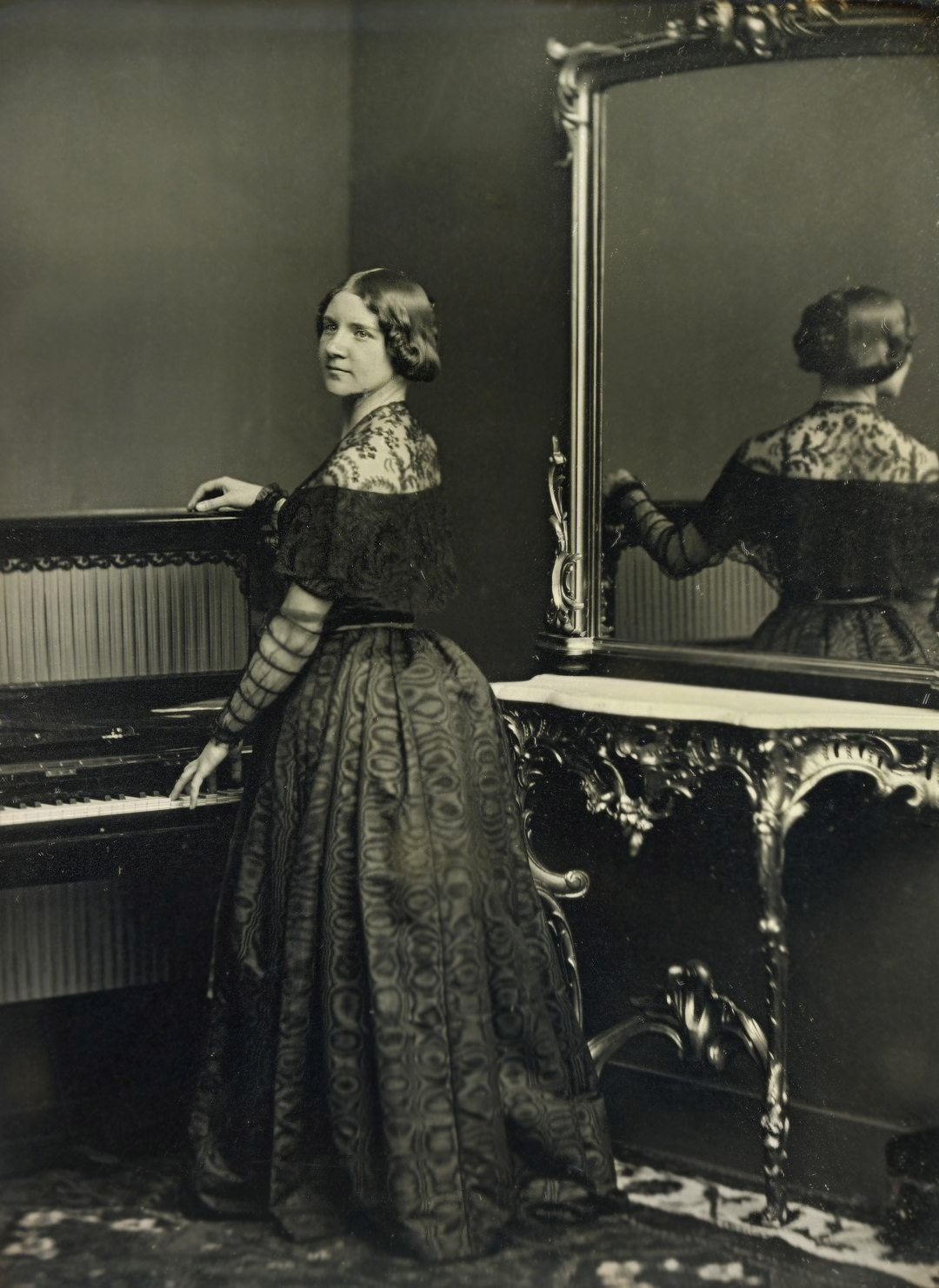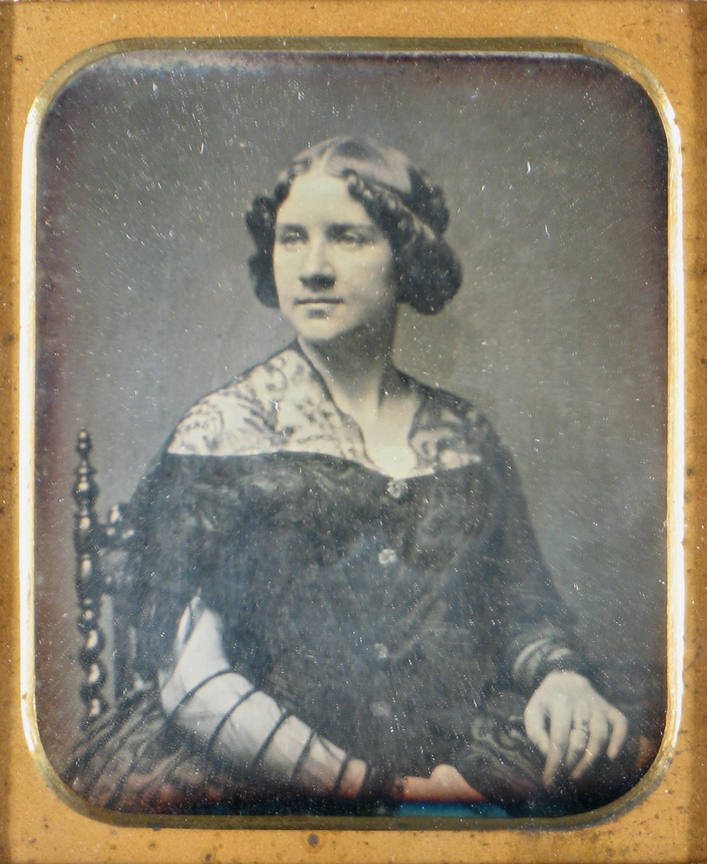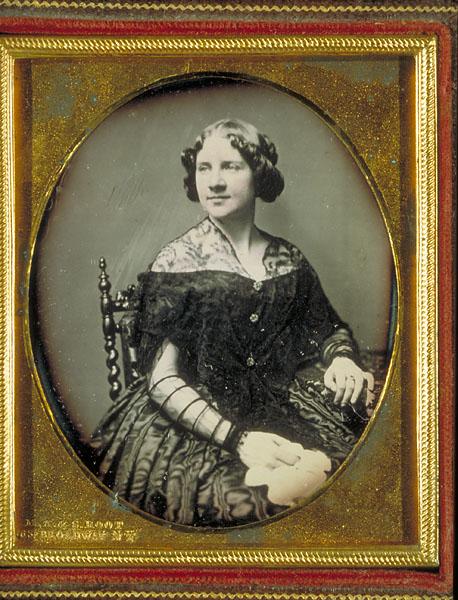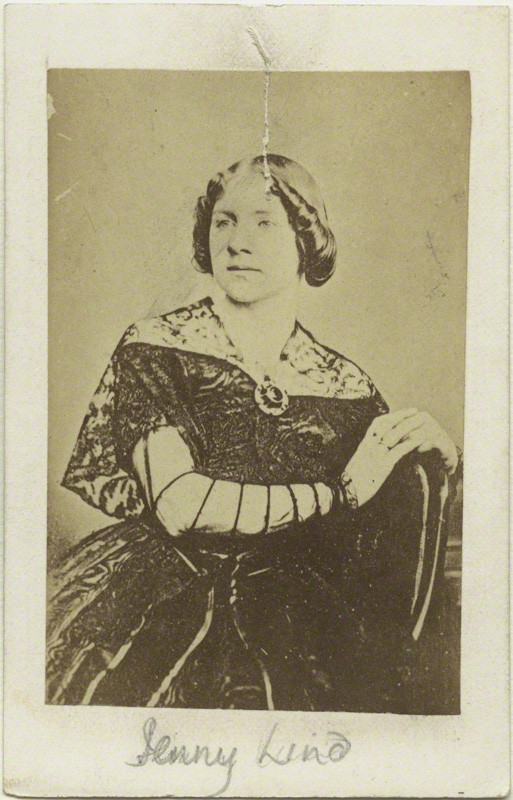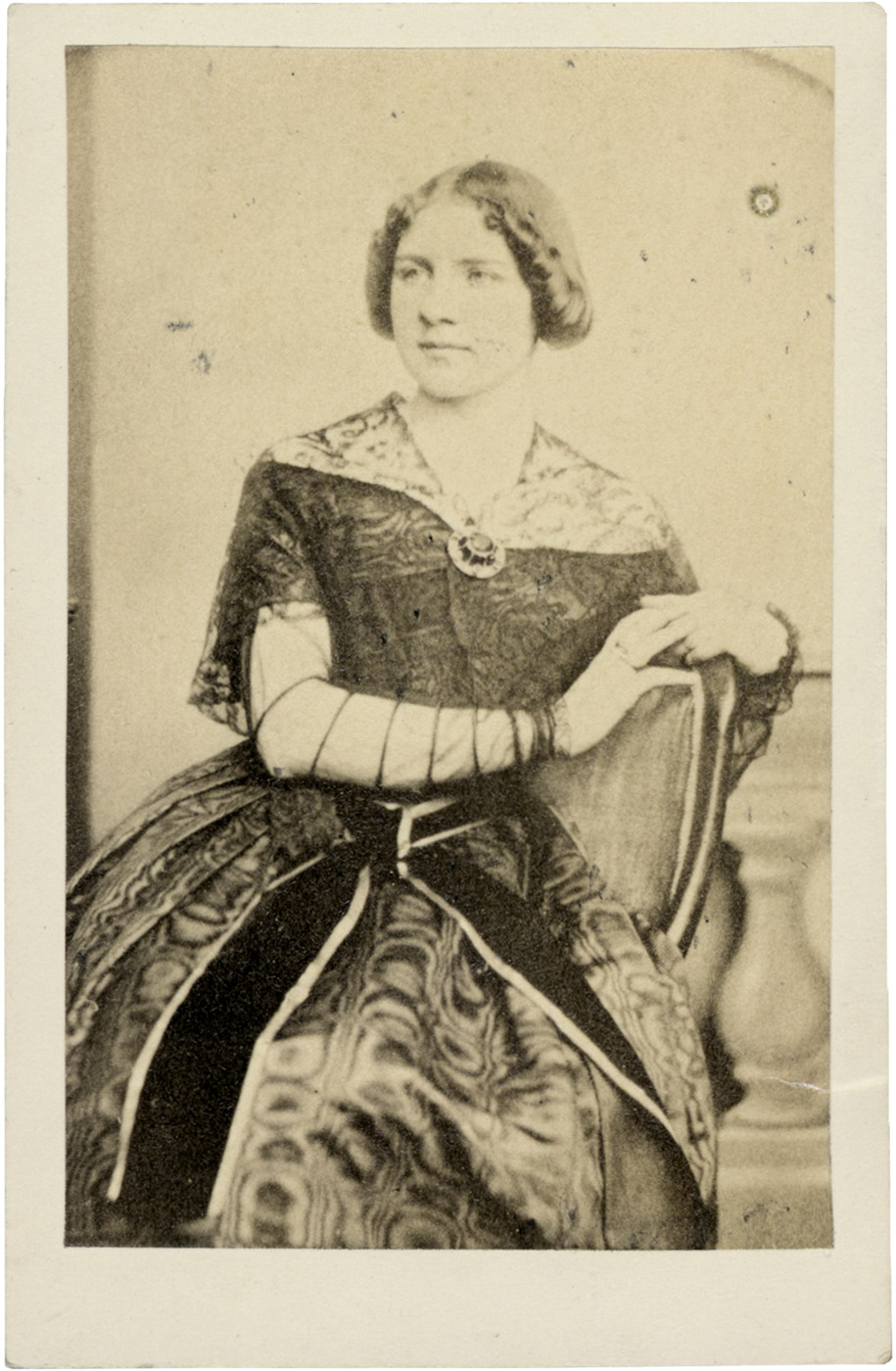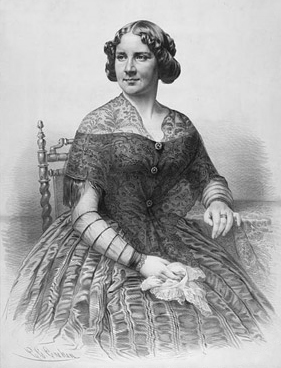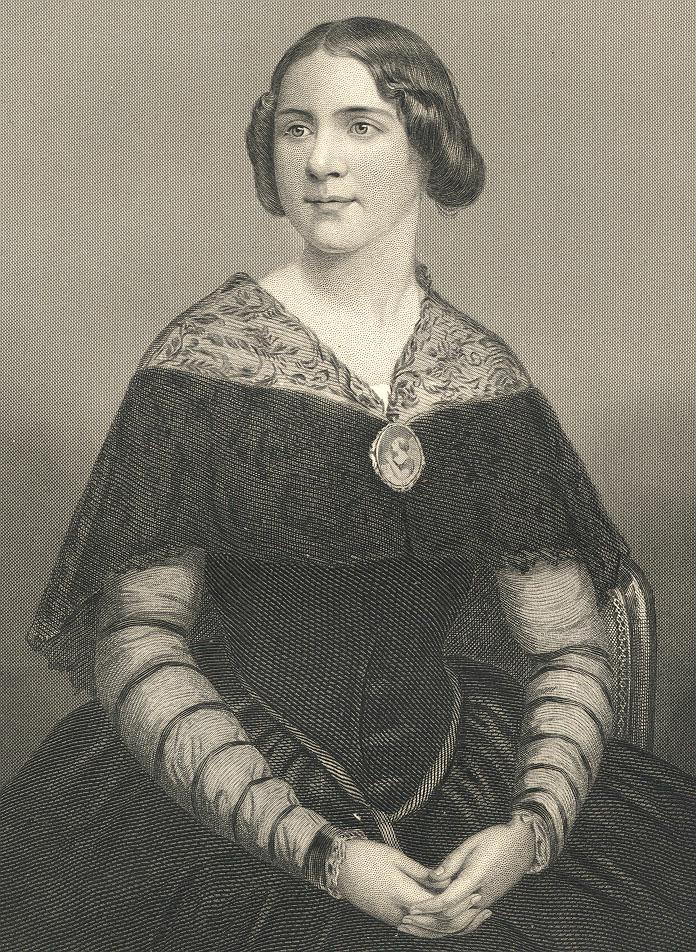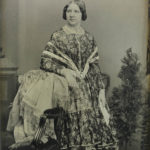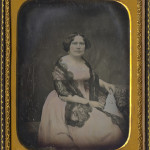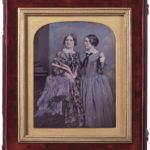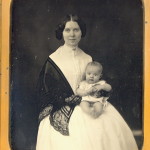Swedish Opera Singer Jenny Lind, ca. 1848
photo 1: Daguerreotype of Jenny Lind by William Edward Kilburn, 1848
Daguerreotype of Jenny Lind standing beside a piano, facing forwards but with her head and upper body turned left. Her right hand rests on the top of the piano and her left hand is touching the keys. She is wearing a long dress and a black lace shawl. The mirror on the wall to the right reflects her back and there is an ornate side table beneath it. The daguerreotype is mounted under glass.
Queen Victoria attended the first London performance given by the Swedish soprano Jenny Lind on the 4th of May 1847. She described the occasion in her journal: ‘The great event of the evening however was Jenny Lind’s appearance & her complete triumph. She has the most exquisite, powerful, & really quite peculiar voice’. She later sang among the choristers at the wedding of the Prince of Wales in St George’s Chapel in 1863.
Kilburn exhibited several daguerreotypes at the Great Exhibition, with this image being particularly well received. The exhibition jury commented: ‘For novelty of design we may mention a small picture of the interior of a room, including a whole-length portrait of Jenny Lind: beside, and near her, is a large mirror, in which the figure is reflected. That the reflection in the glass is equally perfect with the original is the point worthy of remark and commendation‘.
The daguerreotype was also reproduced with significant cropping in carte-de-visite format, such as in the example today kept at the Victoria & Albert Museum, London.
Queen Victoria attended the first London performance given by the Swedish soprano Jenny Lind (1820–87) on 4 May 1847 (she had heard her sing in Germany in 1845). The Queen described the occasion in her Journal: ‘The great event of the evening however was Jenny Lind’s appearance & her complete triumph. She has a most exquisite, powerful, & really quite peculiar voice’. Subsequent entries demonstrate that the Queen continued to be deeply impressed both by Jenny Lind’s voice and her acting abilities. She heard her sing on stage numerous times, as well as in recital at Windsor Castle. The ‘Swedish Nightingale’ later sang among the choristers at the wedding of the Prince of Wales in St George’s Chapel in 1863.
W.E. Kilburn showed several examples of his work at the Great Exhibition, where he received a Prize Medal. His daguerreotype of Jenny Lind standing at the piano was particularly well received (Reports by the Juries, pp. 600–601):
For novelty of design we may mention a small picture of the interior of a room, including a whole-length portrait of Jenny Lind: beside, and near her, is a large mirror, in which the figure is reflected. That the reflection in the glass is equally perfect with the original is the point worthy of remark and commendation.
British photography did not acquit itself with distinction at the Great Exhibition, largely because many of the country’s best photographers were not included. Those that were included were divided between two classes, principally Class 10 (Philosophical Instruments and Processes) and Class 30 (Fine Arts). Photographs from abroad were grouped with each country’s display. Britain managed to represent the different processes in use and demonstrated some technological achievements, but overall produced little of artistic merit. The publication of Reports by the Juries in 1852, however, was a turning point for British photography: it was decided to illustrate the publication with original photographs showing the Crystal Palace and the displays inside. Two photographers, Hugh Owen and Claude-Marie Ferrier, produced between them the 154 photographs that were mounted into the four volumes. It was a remarkable achievement that hinted at the potential of the new medium: ‘Photography is yet in its infancy, and that all which has been yet accomplished – marvellous and exquisite though it is – is as nothing to what will be performed when the veil shall be removed, which for the present obscures its true scientific principles’ (Reports by the Juries, p. 598).
photo 2: Daguerreotype of Jenny Lind, attributed to Louis-Jacques-Mandé Daguerre, ca. 1840-51
photo 3: sixth-plate Daguerreotype by Marcus Aurelius Root & Samuel Root, ca. 1849-1851.
Second known Daguerreotype of Jenny Lind circa September 1850. Sixth plate daguerreotype taken by M. Root or S. Root at their studio in New York City. This daguerreotype was later made into a lithograph of Jenny Lind by Nagel & Weingaertner:
.photo 4 & 5: probably after William Edward Kilburn, albumen print on card mount, 1860s (originially 1848)
Engraving of Jenny Lind by Evert A. Duykinck, 1873
.
source: MOMA, National Portrait Gallery, WikiCommons, Harvard Library
.

